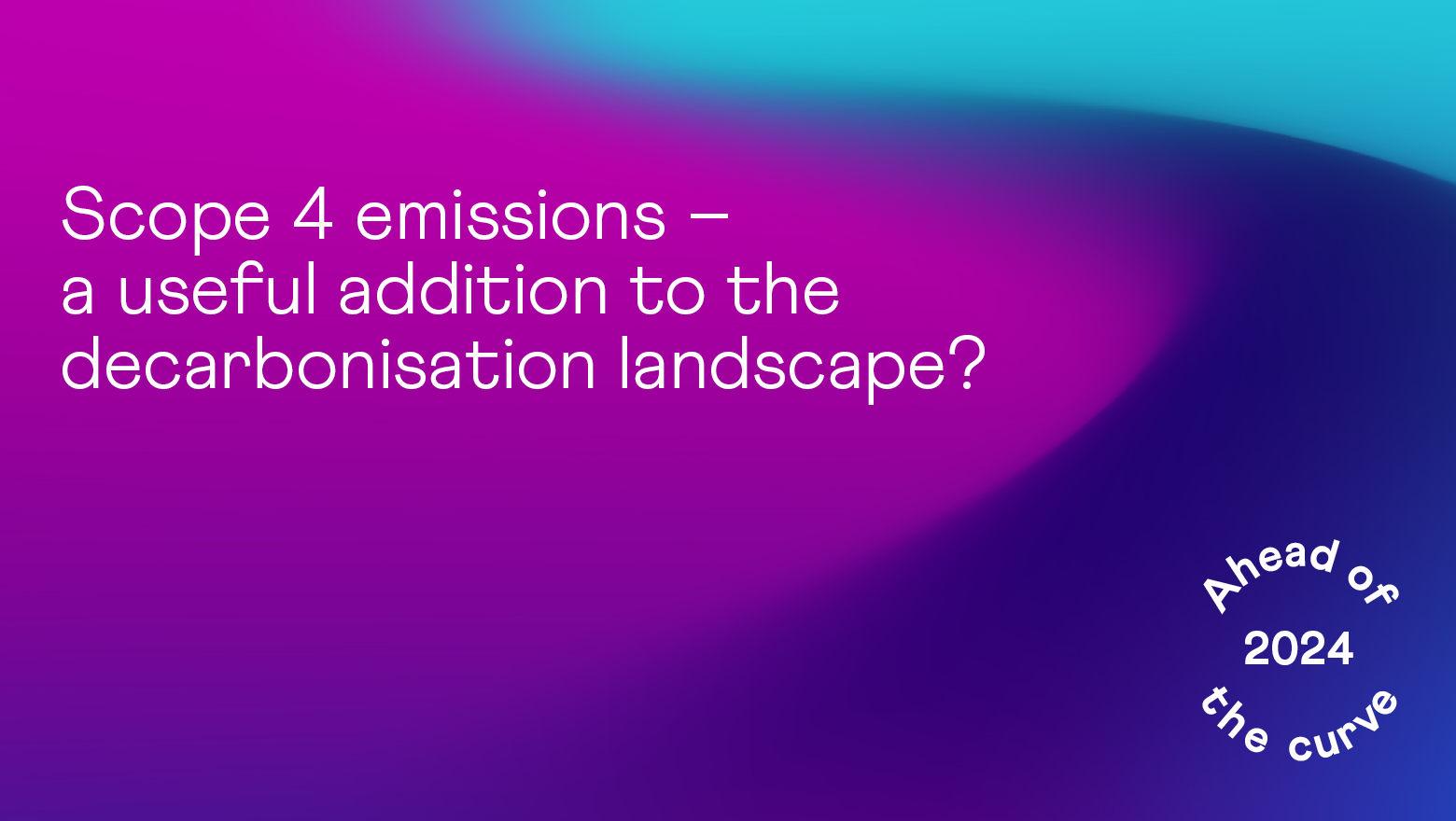
Scope 4 emissions are of particular interest for companies developing or promoting low-carbon products or striving to improve the environmental impact of their offerings; e.g. an energy-saving battery, which reduces electricity usage compared to a normal battery, or a detergent that works more efficiently at lower temperatures than others available on the market.
Stay informed with regulations, insights & events by joining our mailer
By now, you have most likely heard of greenhouse gas (GHG) emissions and the scopes used to categorise these, but if not here is a reminder:
Scope 1:
Direct emissions from owned or controlled sources (boilers, furnaces, vehicles etc.)
Scope 2:
Indirect emissions (purchased electricity, heat, cooling, steam)
Scope 3:
All other indirect emissions that occur in the value chain
But are you familiar with Scope 4?
Scope 4 is defined as “the GHG emissions impact of a product (good or service), relative to the situation where that product does not exist”.
These impacts may be positive or negative, with positive differences often referred to as “avoided emissions”, the idea being that by using these goods or services emissions are avoided or reduced when compared to the status quo or another reference scenario.
Why report Scope 4?
Scope 4 emissions are of particular interest for companies developing or promoting low-carbon products or striving to improve the environmental impact of their offerings; e.g. an energy-saving battery, which reduces electricity usage compared to a normal battery, or a detergent that works more efficiently at lower temperatures than others available on the market.
But this is where it starts to get complex: how do you define these comparative reference points?
The challenge
Developing a reference or baseline case from which to establish emissions reductions is a complicated task in its own right. Whether you are trying to establish an average representation of the market or a reference to a previous generation of a product, the work will be full of assumptions. Is it a like-for-like replacement? Are energy sources identical? Are your estimates based on consumer behaviour? Take a company developing a new “energy saving” washing machine as an example. Calculating emissions from its use is already a difficult exercise, let alone defining the “typical” appliance it may be replacing. Furthermore, this reference will be out of date almost as soon as it is calculated as products are becoming more efficient, resulting in Scope 4 numbers becoming increasingly exaggerated over time.
With no widely accepted standards for Scope 4 emissions, variation in calculation methods and difficulty in verification, the risk of greenwashing is rife, potentially leading to reputational damage or even litigation. Additionally, companies could be accused of ”greenlighting”: spotlighting a green feature of its offering, however small, to draw attention away from other environmentally damaging activities.
Hence the need for avoided emissions to be contextualised by a comprehensive and complete Scope 1, 2 and 3 inventory from which avoided emissions cannot be subtracted.
Next steps
Despite the potential risks and complexity of Scope 4, reducing emissions in any sense is undoubtedly a positive outcome and one of the lenses through which to approach the development of less environmentally impactful products or services.
However, the calculation and communication of any Scope 4 claims must be handled in a robust manner. Rather than a speculative all-encompassing metric, it may be more impactful to pursue reductions in Scope 3 Category 11: Use of Sold Products.
A business’ approach to reducing the impact of its products or services should be based on a whole portfolio-level strategy, rather than a product or service basis. A holistic and whole-systems approach must be taken to ensure no unwanted impacts or interdependencies arise, with the focus not solely based on emissions reductions but on contribution to a low-carbon, climate resilient, socially just and nature positive economy.
How we can help
Whether you have leading climate ambitions or are only just considering a clear climate strategy, requirements for GHG and transition planning are developing all the time.
If you need help thinking about how you can ensure you are ahead of the curve in the climate transition space, please get in touch.

